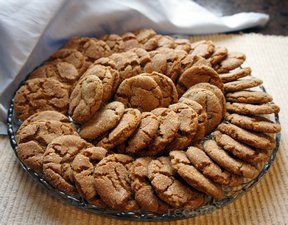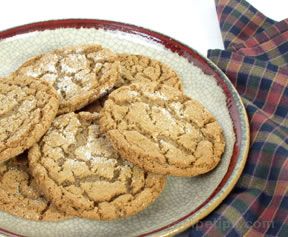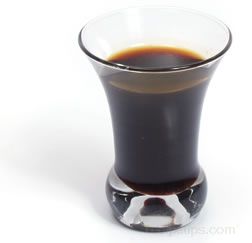Similar Content to: Pomegranate Molasses

Light Molasses are produced from the first boiling. The lighter Molasses, often referred to as "original," "mild" or "Barbados" Molasses, provide a subtle, sweet tasting syrup. It is an ingredient that is commonly added to syrups, baked goods, marinades, rubs, and sauces, or served as a topping for toast and biscuits. It is combined with foods and recipes which benefit from the addition of a mildly sweet product that is more mellow in flavor. This variety produces cookies that may be somewhat softer and breads that are more crusty.
The second boiling produces a darker Molasses, also known as "robust," "full flavored" or "cooking Molasses", that is not as sweet as light Molasses but thicker in texture. The dark Molasses are most often used to flavor sweets, such as fruit cake, ginger snaps, gingerbread, shoefly pie, and Indian pudding. It is also used to flavor baked beans and sauces such as barbecue, meat, soy, spaghetti, or sweet and sour sauce. Light and dark Molasses can generally be used interchangeably.
The third boiling produces the blackstrap Molasses, a very dark and thick solution with a somewhat bitter flavor. This variety of Molasses can be found in natural food stores where it is sold for its nutritional benefits, which have not been fully proven yet. The majority of blackstrap Molasses ultimately become an ingredient for use in the production of livestock feed. However, it is often used as a coloring agent in foods as well as a sweetener for some baked goods, meat and vegetable dishes when blended with light Molasses. Similarly produced is a sugar known as treacle, a Molasses product that is common in Eurpoean areas such as the United Kingdom and like Molasses, is produced as a byproduct or residue of cane refining. It is available as light or dark treacle both of which have the same characteristics as light and dark Molasses.
When a Molasses container identifies the product as "sulphured" or "unsulfured" the terms are used merely to advise which Molasses were refined using sulphur dioxide. Sulfured Molasses are made from young sugar cane, which requires sulfur dioxide during the sugar refining process. As the sulfur becomes mixed into the Molasses solution, a change in flavor occurs, reducing some of rich taste generally provided by Molasses not processed with sulfur dioxide. Unsulfured Molasses are made with more mature raw materials and the juice is clarified as it is processed, producing a higher quality, thicker, sweeter, and better tasting grade of Molasses. Unsulfered Molasses are typically preferred for recipes in order to provide a more pure flavor.
Other types of Molasses are also produced, such as pomegranate Molasses from the sugars in pomegranate juice; sorgum Molasses made from sorgum grain and processed into a syrup; and bead molasses, a Molasses similar to light Molasses, which is commonly used as a flavoring and coloring for many Asian food dishes.
All Molasses should be stored in dry, moderately temperate (50°F to 70°F) areas, away from heat and humidity. Light and dark Molasses can be kept for 1 to 2 years, while blackstrap Molasses stored at room temperature should only be kept for 3 months or less.










